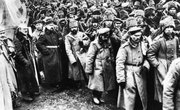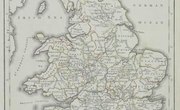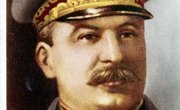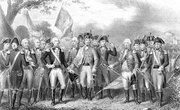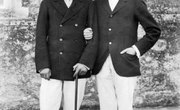When James Stuart, the king of Scotland, ascended the throne of England, he united Scotland, Ireland and England under a common monarch for the first time. The three kingdoms had a history of rivalry that made them difficult to rule. When James' son, Charles I, succeeded him, he inherited conflicts that resulted in a series of English civil wars from 1642 to 1651. Nearly 200,000 people perished during the wars, which were the last civil conflicts on English soil.
The Reign of King Charles I
Charles I seemed determined to rule without calling Parliament at regular intervals, a habit that bothered many people living in England. He ruled three tumultuous kingdoms dominated by diverse Christian religions: Calvinism in Scotland, Anglicanism in England and Catholicism in Ireland. In 1641, the Irish Catholics revolted, killing English and Scottish Protestants who'd settled there. Charles wanted to suppress the Irish rebellion but didn't have the money to raise troops on his own. He called Parliament, but the members of Parliament refused to give the king money or raise troops for him unless their own problems were addressed -- among them, a requirement that the king must call Parliament at least once a year.
Cavaliers and Roundheads
The conflict between King Charles and Parliament reached its pinnacle in 1642 when the king came to Parliament demanding the surrender of five members he believed were traitors to the crown. They escaped, and the subjects of the kingdom chose sides as the first of three English civil wars began. Most of northern and western England, along with much of Ireland, favored the king. These were the Royalists, or Cavaliers. The Parliamentarians, also called Roundheads, controlled southeast England and had the support of the Royal Navy. Oliver Cromwell, an activist member of Parliament, raised troops for the Parliamentarians in the provinces. In 1643, Charles' victory over the Parliamentarians seemed secure -- but an alliance between the Parliamentarians and Scotland put that victory in doubt.
The Monarchy Abolished
With the intervention of Scottish forces, the Parliamentarians steadily gained the upper hand over Charles' Royalists. In 1644, Charles lost control of northern England. By 1645 the Parliamentarian forces, under the command of Oliver Cromwell, had defeated the king's main army and taken the king captive. Charles was unwilling to surrender to the English Parliamentarians, so he surrendered instead to the Scots and planned his escape. After his capture, the king stirred up further violence that became known as England's Second Civil War. The Parliamentarians realized there would be no peace in the realm unless the king was killed, so they arrested him on charges of high treason. The king was tried, found guilty and beheaded in January of 1649.
Lord Protector Oliver Cromwell
After Charles had been executed, a republic was formed in England. Oliver Cromwell was charged with the reconquest of Ireland, which had been ruled by a Catholic Confederation since 1642. With Cromwell in Ireland, Charles II, the executed king's son, surfaced in Scotland. In 1651 he was crowned king of Scotland and sent Scottish forces to invade England, beginning the third English civil war. Fighting in Ireland continued until 1642, but Cromwell then invaded Scotland to defeat the forces of Charles II. In 1653, Cromwell was named "lord protector" of the commonwealth of England, Scotland and Ireland -- the only non-royal ever to rule the three kingdoms. Charles II, who had escaped to France, returned to the throne after Cromwell's death.
Related Articles
References
- History.com: British History -- English Civil Wars
- BBC History: British History in Depth: Overview -- Civil War and Revolution, 1603-1714
- BBC History: British History in Depth: Oliver Cromwell
- BBC History: British History in Depth: Choosing Sides in the English Civil War
- Official Website of the British Monarchy: History of the Monarchy: The Stuarts -- Charles I
Writer Bio
Jennifer Mueller began writing and editing professionally in 1995, when she became sports editor of her university's newspaper while also writing a bi-monthly general interest column for an independent tourist publication. Mueller holds a Bachelor of Arts in political science from the University of North Carolina at Asheville and a Juris Doctor from Indiana University Maurer School of Law.



